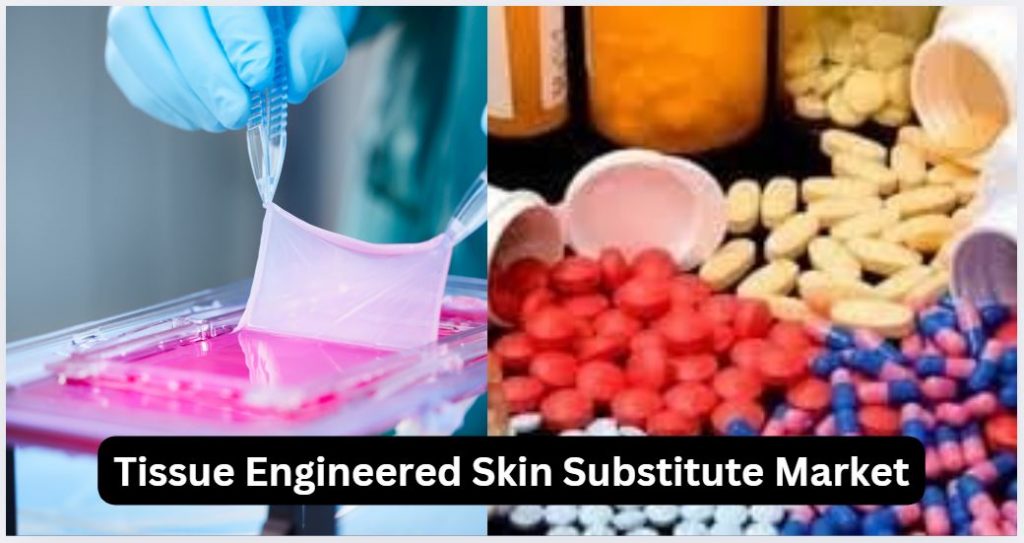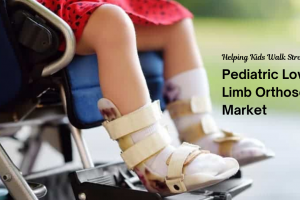
Market Overview
The Tissue Engineered Skin Substitute Market size was valued at USD 2,402.5 million in 2024 and is anticipated to reach USD 3,313.36 million by 2032, at a CAGR of 4.1% during the forecast period (2024–2032). This market represents a rapidly evolving sector within regenerative medicine, combining biological materials, synthetic compounds, and technological innovation to replicate human skin for both clinical and research purposes.
Tissue-engineered skin substitutes play a vital role in treating acute and chronic wounds, including burns, diabetic ulcers, and surgical injuries. As medical technology advances, these substitutes offer a promising solution for faster healing, reduced scarring, and improved patient outcomes. Their applications span across wound care centers, hospitals, and outpatient settings, increasing accessibility and integration in modern treatment protocols.
In the current global healthcare context, the importance of advanced wound care solutions is magnified by the rising elderly population, increasing incidence of diabetes, and growing awareness about patient-centric healing options. Moreover, the market benefits from substantial investments in tissue engineering and a steady stream of product approvals from regulatory bodies. With healthcare systems emphasizing cost-effective and long-term wound care solutions, the demand for skin substitutes is expected to rise consistently. As a result, this market stands at the forefront of a transformation in personalized and regenerative treatment approaches.
Get full market insights: https://www.credenceresearch.com/report/tissue-engineered-skin-substitute-market
Market Drivers
Rising Incidence of Chronic Wounds
A growing global burden of chronic wounds, such as diabetic foot ulcers and venous leg ulcers, is significantly driving the market. With over 463 million people suffering from diabetes globally, there is a pressing need for effective skin regeneration solutions. Tissue-engineered skin substitutes offer accelerated healing and reduce hospital readmissions, making them a preferred choice in chronic wound management.
Technological Advancements in Tissue Engineering
Innovations in bioengineering and biomaterials are improving the efficacy and scalability of skin substitutes. For instance, 3D bioprinting technologies and nanotechnology are enabling the development of substitutes that closely mimic native skin structure. These advancements are enhancing product acceptance among clinicians and broadening the scope of treatment options.
Increasing Geriatric Population
The global aging population is more susceptible to skin breakdown, pressure ulcers, and delayed wound healing. As per recent studies, the population aged 65 and above is projected to double by 2050. This demographic shift directly increases the demand for advanced wound care products, including tissue-engineered substitutes that cater to the elderly’s specific healing needs.
Favorable Government Support and Reimbursement Policies
Governments in developed economies are investing in advanced wound care infrastructure. Coupled with favorable reimbursement scenarios, especially in the U.S. and parts of Europe, this has facilitated broader adoption of high-cost but high-efficiency products. These factors collectively promote the use of tissue-engineered skin substitutes in public and private healthcare facilities.
Market Challenges
High Cost of Advanced Skin Substitutes
One of the significant barriers in this market is the high cost associated with tissue-engineered products. These substitutes require expensive materials, intricate manufacturing processes, and stringent quality control, making them less accessible in low- and middle-income countries.
Complex Regulatory Approvals
The regulatory landscape for biologics and combination products is highly complex. Gaining approval for new skin substitutes often involves rigorous clinical trials and documentation, which delay time-to-market and discourage smaller manufacturers from entering the space.
Limited Product Availability in Developing Regions
While the market sees strong growth in developed nations, emerging economies still face accessibility challenges. Infrastructural limitations, lack of skilled professionals, and limited awareness hamper the adoption of tissue-engineered substitutes across regions like Africa and parts of Asia.
Competitive Pressure and Innovation Costs
The need for continuous innovation to maintain competitive advantage places financial pressure on companies. This challenge is further intensified by the presence of established players, making market entry difficult for startups and small-scale producers.
Market Opportunity
Expansion into Emerging Markets
Developing economies present vast untapped potential due to increasing healthcare expenditure and rising awareness of advanced wound care. Companies that adapt their pricing models and collaborate with local healthcare providers can penetrate these high-growth regions.
Rising Demand for Personalized Medicine
The future of skin substitutes lies in customization. Personalized tissue-engineered products that align with patient-specific healing profiles are gaining traction. This trend opens doors for innovation and premium pricing opportunities.
Integration of AI and Robotics in Tissue Manufacturing
The integration of automation and artificial intelligence in manufacturing processes is reducing production errors and improving scalability. These technologies support real-time monitoring, enhancing product quality and market readiness.
Strategic Collaborations and Partnerships
Collaborations between hospitals, biotech firms, and research institutions are accelerating the pace of innovation. These partnerships create synergy in R&D and provide access to broader clinical data, leading to faster product development and market penetration.
Market Segmentation
By Product
- Biological
- Biosynthetic
- Synthetic
By Application
- Chronic
- Acute Wounds
By End User
- Wound Care Centers
- Hospitals
- Others
By Region
North America
- U.S.
- Canada
- Mexico
Europe
- UK
- France
- Germany
- Italy
- Spain
- Russia
- Belgium
- Netherlands
- Austria
- Sweden
- Poland
- Denmark
- Switzerland
- Rest of Europe
Asia Pacific
- China
- Japan
- South Korea
- India
- Australia
- Thailand
- Indonesia
- Vietnam
- Malaysia
- Philippines
- Taiwan
- Rest of Asia Pacific
Latin America
- Brazil
- Argentina
- Peru
- Chile
- Colombia
- Rest of Latin America
Middle East & Africa
- GCC Countries
- South Africa
- Rest of the Middle East and Africa
Regional Analysis
North America
North America remains the dominant market, driven by high healthcare spending, advanced medical infrastructure, and strong reimbursement policies. The U.S. leads in innovation and adoption of new technologies in wound care.
Europe
Europe follows closely, with countries like Germany, the UK, and France showcasing robust healthcare systems and regulatory support for biologics. The region also benefits from a large geriatric population.
Asia Pacific
Asia Pacific is the fastest-growing region due to increasing awareness and healthcare reforms in countries such as China, India, and South Korea. The region offers high potential for manufacturers due to a large patient population and rising disposable incomes.
Latin America
Latin America is emerging as a favorable market due to improving healthcare access and government initiatives. Brazil and Argentina lead the region in terms of advanced wound care adoption.
Middle East & Africa
This region remains underpenetrated but holds potential for growth, especially in urban centers across GCC countries and South Africa. The rise in medical tourism and chronic disease prevalence is gradually boosting demand.
Top Companies
- Organogenesis Inc.
- Smith & Nephew plc
- Integra LifeSciences Corporation
- Acelity (3M Company)
- MiMedx Group, Inc.
- Medtronic plc
- Zimmer Biomet Holdings, Inc.
- Amnio Technology, LLC
- AlloSource
- Vericel Corporation
Future Outlook
- Adoption of 3D bioprinting is set to transform the design of customized skin substitutes.
- Personalized wound care products will drive premium pricing strategies.
- Strategic partnerships between biotech firms and hospitals will spur innovation.
- Demand from outpatient and home healthcare settings is expected to rise.
- Reimbursement expansions in Asia and Europe will improve accessibility.
- Emerging markets will become manufacturing hubs for cost-effective products.
- AI integration will improve manufacturing efficiency and reduce costs.
- Technological innovations will lead to multifunctional and smart skin substitutes.
- Government funding for regenerative medicine will boost research initiatives.
- Growing environmental concerns will drive interest in sustainable biomaterials.
Get full market insights: https://www.credenceresearch.com/report/tissue-engineered-skin-substitute-market











